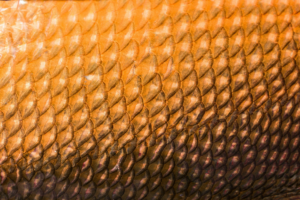19/02/2025
This blog is the second part of a series on innovations in the alternative protein sector. To read the first part of the series, please see here.
In 1931, Winston Churchill predicted “[Fifty years hence] we shall escape the absurdity of growing a whole chicken in order to eat the breast or wing, by growing these parts separately under a suitable medium.”1
82 years later, in 2013, Mark Post ate the world’s first lab-grown hamburger at a news conference in London. It weighed 85 grams and cost approximately £215,000 to create.2,3
In 2024, for the first time anywhere, a product containing chicken cells that were grown in a lab debuted for consumer purchase on the shelves of a butcher shop in Singapore. The chicken, Good Meat 3, was a hybrid product containing 3 percent by weight cultivated chicken cells, approved for human consumption in Singapore. The balance of the product was plant based.4, 5
On 7th Feb 2025, the UK-based start-up Meatly became the first company to sell cultivated meat as pet food anywhere in the world, and cultivated meat in anywhere in Europe. Meatly’s dog treats contain cultivated chicken and plant-based ingredients. They received regulatory approval in the UK in July 2024,6 and recently went on sale at Pets at Home in London.7
Cultivated meat, or cultured meat, is a slaughter-free meat alternative produced through tissue engineering technologies, in which a sample of cells is taken from an animal and grown in a bioreactor.
Certain cultivated meat products have been approved for human consumption in Singapore, the US, Israel, and Hong Kong (and for tastings in the Netherlands) but their availability to consumers in these places to date has largely been limited to a small number of restaurants.8-12
Today there are over 150 companies worldwide working to bring cultivated meat to consumers.13 For instance, there are companies seeking to make cultivated chicken (Good Meat and Upside Foods in the US, Vital Meat in France, and Believer Meats in Israel); foie gras (Gourmey, France); quail (Vow, Australia); pork (Ivy Farm and Uncommon in the UK, Fork&Good in the US); and beef (Ivy Farm in the UK, Mosa Meat and Meatable in the Netherlands, Meatleo in France, Ohayo Valley and Orbillion in the US, Aleph Farms in Israel and TissenBioFarm in South Korea). Several companies aim to produce exclusively cultivated fat without the muscle tissue – for instance, Hoxton Farms (UK), Cellva (Brazil) and Misson Barns (US) are making cultivated pork fat, and Mosa Meat has recently applied for EU regulatory approval of its cultivated beef fat.14
Before we turn to some of the more technical aspects of what these companies do, think of a steak. And, if you eat steak, think of some of the words you might use to describe a good one: marbled, tender, chewy, juicy, medium-rare, flavourful. When you use these words, you’re actually saying things about properties related the structure of the steak, because technically, a steak has a particular structure to it. It consists primarily of muscle cells, connective tissue cells, fat cells, blood vessels and extracellular matrix (ECM) in a particular arrangement, all of which contribute to its organoleptic properties of taste, texture, appearance and aroma.15 So when you say marbled, you mean muscle and fat tissue are intermixed; tender and chewy: the muscle, connective tissue and fat provide the steak with a particular texture; juicy: the steak is perfused with fat droplets and maybe some blood, which provide moisture; medium rare: the steak has undergone browning on the outside but the tissues are still pink in the middle; flavourful: the muscle tissue, fat and blood all contribute to the taste of the steak, etc.
But how could this ever be achieved with cells grown in a lab? You’d need different types of cells (i.e. differentiated cells) and they’d need to be arranged in a particular way, you know, like a steak.
Creating unstructured products such as pâté, mince and sausages is therefore technically a bit easier than creating whole cuts such as fillet and steaks, and so the first product offerings from companies producing cultivated meat have tended towards the former.13 Apart from product formulation aspects driving this trend, there are also some biological ones: the thicker the cut of meat, the greater the depth of layered cells. This presents a challenge in vitro because the cells must both be able to receive oxygen and nutrients and to eliminate waste – these processes may be accomplished by diffusion if cell numbers are relatively small, but when the numbers and dimensions in vitro become larger it all becomes more complicated, requiring something that is analogous to vasculature.16
And a note on the ECM: it’s actually a very important structure. It contains carbohydrates and proteins, among them collagen, fibronectin and laminin, which provide structural support to the cells and facilitate intracellular communication via cell signalling, which can cause cells to differentiate, grow and proliferate. Cultivated meat may be created through tissue engineering in a process involving biopsy of cells from an animal, isolating the desired cells, expanding the cells (i.e., allowing them to multiply), differentiating the cells into appropriate cell types, harvesting the cells and formulating a product.15 While it may be easy enough to culture animal cells in a small flask, it is another thing entirely to cultivate cells having enough biomass in order to produce meat at a commercial, industrialised scale. Considerable problems involved in scale-up of the culturing of animal cells must be solved before cultivated meat can be brought to market affordably.
There are thus five main technical areas to be optimised in the production of cultivated meat, all of which are major areas of innovation in the industry: cell selection, culture media (including supplements and growth factors), bioprocesses, scaffolding and product formulation.13 A summary of the technical problems in each of these areas follows, followed by brief descriptions of selected patent filings in the areas by some innovative companies within the industry.
A discussion of the first two of these areas – cell selection and culture media follows below, while the last three areas – bioprocesses, scaffolding and product formulation – are the topic of Part 3 of this series.
Cell Selection
With respect to the first of these areas, cell selection, cells are isolated from animals through biopsy, with different types of cells (e.g. muscle, fat, fibroblasts) being used. The starting cells may have different levels of potency, or ability to differentiate into various cell types. For instance, pluripotent cells such as embryonic stem cells (ESCs) and induced pluripotent stem cells (iPSCs) have the greatest ability to differentiate, multipotent cells such as mesenchymal stem cells (MSCs) are intermediate in ability, and unipotent cells such as myoblasts, muscle satellite cells or fibroblasts are limited in their ability to differentiate.17 When aiming to produce large volumes of cells, or biomass, relevant considerations include cell numbers, differentiation, growth rates, and whether the cells are/can be selected or engineered to thrive in particular environments (e.g. low or no serum, scaffold-free) or immortalised (and what these things means from a regulatory and consumer acceptance perspective). There are also animal welfare concerns in the biopsy process, as the cells may be isolated from either live or sacrificed animals.15
Relevant patent families relating to cell selection include Meatable’s WO2024/084082, WO2024/170696 and WO2024/170702, which are directed to pluripotent cells and methods for producing skeletal muscle cells or adipocytes therefrom; Good Meat’s WO2024/007033 to cells that are adapted to grow in environments low in insulin and/or transferrin; Roslin Technologies’ EP4170018, WO2023067090, WO2021209599 to induced pluripotent stem cells; Alt Atlas’ WO2023223303 to using machine learning and artificial intelligence to select cell lines; and Joe’s Future Food Tech’s WO2024/153174 to cells that grow without scaffolding in a serum-free media and WO2024/088255 to a spontaneously immortalized pig muscle stem cell line.
Culture Media, Supplements and Growth Factors
The second area of optimisation involves the cell culture media in which the cells are grown. Medical grade culture media is very expensive and must frequently be refreshed during the cell cultivation process (as nutrients are depleted and toxic metabolites accumulate) so there are many areas in which media usage and composition may be optimised. There must be strict sterility standards around media (and bioreactor components) because of the potential for bacterial, viral and/or fungal contamination, which can easily ruin whole batches of cultivated meat. Moreover, serum supplements to cell culture media are typically of animal origin (for instance, fetal bovine serum). Therefore the first cultivated meat has not been cruelty-free, and there is thus a drive to replace this animal serum with other materials.15 Furthermore, it may be necessary to supplement media with essential amino acids and growth factors. Because cells “are what they eat” the purity of these components is critical, which adds to their expense.
Relevant patent families relating to culture media include Mosa Meat’s WO2023/003470 to a serum-free medium for cultivating fat cells; Believer Meat’s (formerly Future Meat’s) WO2021/152536, WO2022/238867 and WO2023/156933 directed to devices, systems and methods for recycling and rejuvenating cell culture media, and WO2021/148955 for using plant protein homologues to replace serum in culture media; Multus Biotechnology’s WO2024126830, WO2023170287 and WO2023170280 to recombinant growth factors; 3DBT’s (3D Bio-tissues) WO2023/285813 to serum-free or reduced serum media containing a macromolecular crowding agent; and Tiamat’s WO2022/144468 relating to the use of plant molecular farming to produce recombinant growth factors.
As mentioned above, the discussion of technical problems and innovations in bioprocesses, scaffolding and product formulation are the topic of our next blog, Part 3 of this series.
This article is for general information only. Its content is not a statement of the law on any subject and does not constitute advice. Please contact Reddie & Grose LLP for advice before taking any action in reliance on it.
Read the next article ‘Meat the Innovators – Part II‘.
References
1 America’s National Churchill Museum | Fifty Years Hence, Winston Churchill December 1931
2 World’s first lab-grown burger is eaten in London – BBC News
3 Lab-Grown Meat to Offer Sustainable Protein Option | Lab Manager
4 Expert opinions clash over GOOD Meat’s 3% cultivated chicken launch in Singapore
5 Lab-Grown Meat Is on Shelves Now. But There’s a Catch | WIRED
6 Lab-grown meat in pet food: UK to allow sales of Meatly product – BBC News
7 Meatly launches world’s first cultivated pet food! – Meatly
8 Why Singapore is the only place in the world selling lab-grown meat – BBC News
9 Lab-grown meat is cleared for sale in the United States | CNN Business
10 Israeli company gets green light to make world’s first cultivated beef steaks | AP News
11 Vow’s Lab-Grown Meat Earns Hong Kong Regulatory Approval
12 6 Places That Have Approved Cultivated Meat And 5 That Have Banned It
13 The science of cultivated meat | GFI
14 Mosa Meat submits application to EU



